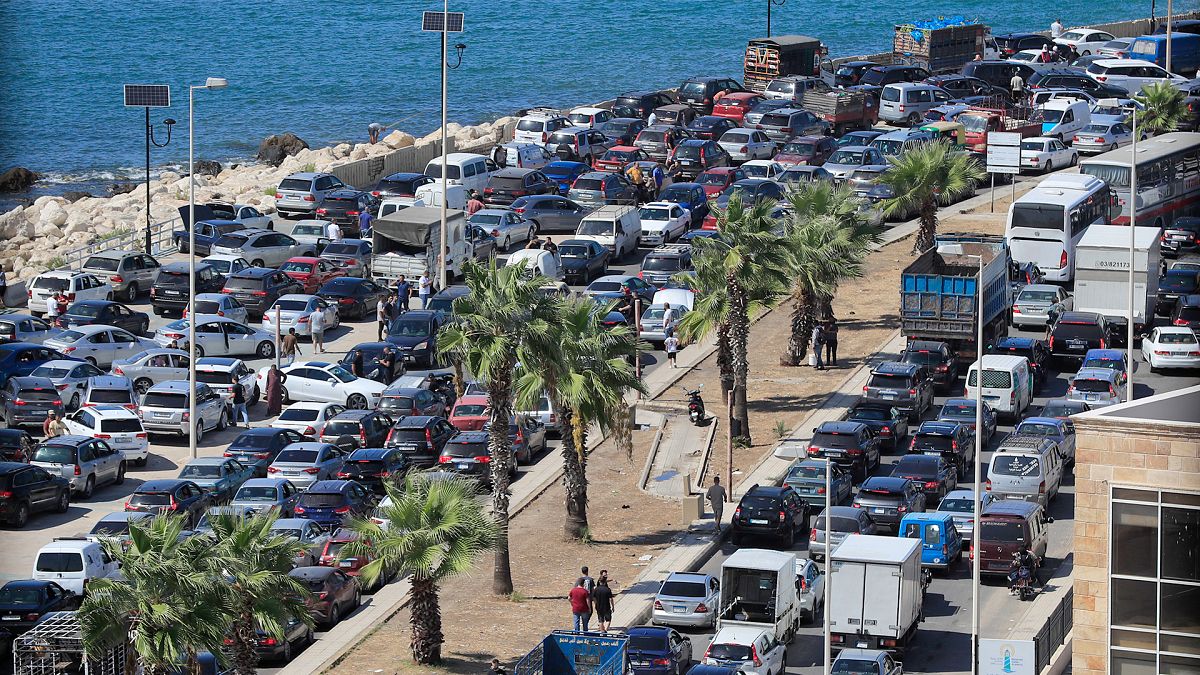The strikes follow Sunday’s heavy exchange of fire, during which Hezbollah launched more than 100 rockets, missiles and drones into northern Israel, with some landing near the city of Haifa.
Thousands of Lebanese citizens fled the south after Israeli air strikes on Monday left hundreds dead, and its military warned residents in southern and eastern parts of the country to evacuate their homes ahead of a widening air campaign against Hezbollah.
The main highway out of the southern port city of Sidon was jammed with cars heading toward Beirut in the biggest exodus since the 2006 fighting. More than 1,000 other people were wounded in the strikes — a staggering one-day toll for a country still reeling from a deadly attack on communication devices last week.
On Monday, Lebanon’s health ministry said at least 356 people were killed and another 1,024 were wounded in Israel’s airstrikes, including children, women and emergency crews, in one of the deadliest barrages in nearly one year of fighting.
Before the latest escalation between Israel and Hezbollah that began with the wave of pager explosions last Tuesday, around 600 people had been killed in Lebanon since October, mostly fighters, but also more than 100 civilians.
The Israeli military announced the strikes on what it said were 300 Hezbollah targets in Lebanon on the social media platform X on early Monday, posting a photo of what is said was the military chief, Lt Gen Herzi Halevi, approving additional attacks from military headquarters in Tel Aviv.
Halevi and other Israeli leaders have promised tougher action against Hezbollah in the coming days.
Earlier on Monday, the Israeli military called on civilians living near Hezbollah targets to evacuate immediately.
Residents of multiple towns in southern Lebanon posted photos on social media showing populated areas being hit by missiles.
Lebanon’s National News Agency says at least one person has been killed and several others wounded in the strikes, which hit the heights of the central province of Byblos.
The northeastern Baalbek and Hermel regions were also targeted by the early morning airstrikes, where a shepherd was killed and two members of his family were wounded in the fields of the village of Bodai, the NNA said.
It added that four other people were also wounded in Bodai and were all taken to hospitals in the area.
The news agency also reported that 11 people were wounded in the southern village of Aitaroun, with one person in serious condition.
“We are deepening our attacks in Lebanon,” Israel’s Defence Minister Yoav Gallant said in a video published on Monday. “The actions will continue until we achieve our goal to return the northern residents safely to their homes,” he added.
An Israeli military official said Israel is focused on aerial operations and has no immediate plans for a ground operation.
The Israel Defence Forces (IDF) said it warned Lebanese civilians against allowing Hezbollah militants to use their homes to store weapons.
Lebanese media outlets also reported that residents received text messages urging them to move away from any building where Hezbollah stores arms until further notice.
There is currently no sign of an immediate exodus from the populated areas of southern Lebanon.
The strikes follow Sunday’s heavy exchange of fire, during which Hezbollah launched more than 100 rockets, missiles and drones into northern Israel, with some landing near the city of Haifa.
Hezbollah’s rocket attack came after an Israeli airstrike on a Beirut suburb on Friday killed a top Hezbollah military commander and more than a dozen Hezbollah members, along with dozens of civilians, including women and children.
Last week, thousands of handheld communications devices, used mainly by Hezbollah members, exploded in different parts of Lebanon, killing 39 people and wounding nearly 3,000.
Lebanon blamed the attacks on Israel, but Israel did not confirm or deny its responsibility.
Read the full article here
